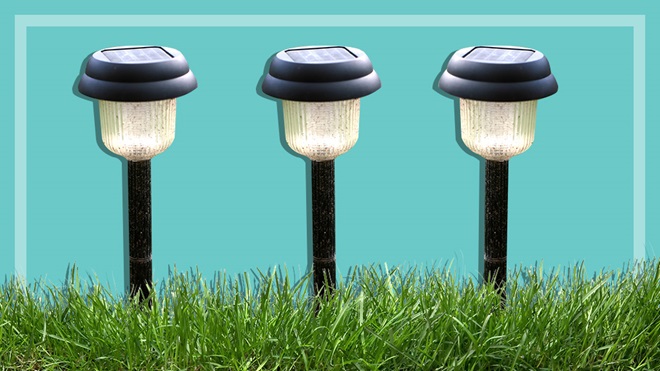A good garden light can be the difference between landing on your rear or making it safely to the door. So what should you look for when shopping for some garden lights?
On this page:
Types of garden lights
There are two main types of garden lights: solar and 12V. 12V lights can be either halogen or LED.
- Solar lights are not effective enough to light a path or garden area, so get them only if you're after something purely decorative.
- 12V lights with a high light intensity are capable of illuminating a driveway, if they're positioned well and enough lights are used.
- 12V systems can be halogen or LED. Halogens tend to give more light intensity, however they use more energy than LEDs.
What to look for in a garden light
Light intensity
If you're after a garden light that will actually light up an area, you'll need one with a high light intensity.
Screw-in placement
Screwing in lights makes them more secure. Otherwise garden lights can be easily pulled out and stolen.
Complete kit
Buying your lights in a kit makes for easier installation – solar kits contain multiple lights, while 12V kits include the lights, cables and a transformer.
Separate solar panel
A separate solar panel will make it easier for you to use solar lights in shaded areas – you can position the panel in the sun.
Battery life
Battery and solar panel life generally reduces with continual use in a garden. Bear this in mind if you're buying a battery-powered 12V garden light or a solar-powered garden light, and choose one that will last longer if possible.
Motion sensor
This is useful for temporarily lighting up an area more substantially when something passes by; it's useful for extra security (i.e. foiling sneaky burglars) and also if you have people in the house who just can't remember to turn off switches...
Light sensor
A dusk/dawn sensor detects the light level, and turns on the garden light when it gets low.
How do you install garden lights?
Solar
Installing most solar garden lights usually involves pushing or screwing the lantern into the upright post and then inserting the whole assembly in the ground. The ground may have to be watered first to make sure the stake can be driven in easily.
12V garden lights
You need to position the lights where you want them in the garden, lay out the cable, connect the lights to the cable, connect the system to the transformer and check all the lights work. You then install the lights and bury the cable under the soil.
What if you don't get a kit?
Buying individual 12V lights rather than a kit means you'll need to buy the cable and a transformer as well. If you need to get long runs of cable, say 18m–25m, you'll need heavy duty cabling, otherwise the lights at the end of the run will get less voltage. Keep in mind that some transformers aren't waterproof.
Cost
From $3 to more than $100 per light.
Stock images: Getty, unless otherwise stated.




